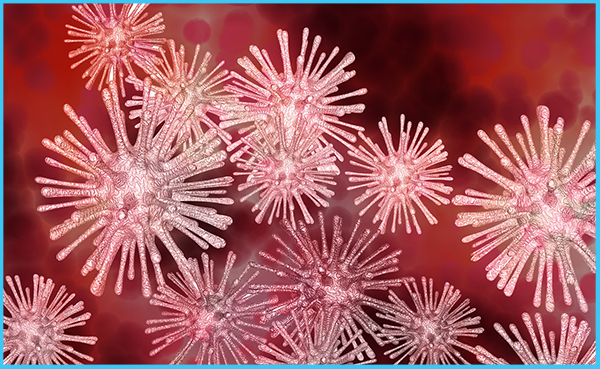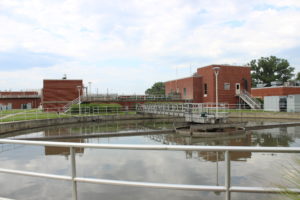
The University of Kansas School of Engineering and the Kansas Department of Health and Environment are teaming up on an experiment to determine if the COVID-19 virus can be detected in the wastewater systems of local communities.
“It’s very preliminary,” said Belinda Sturm, associate vice chancellor for research and professor of civil, environmental & architectural engineering. “The idea is we can’t test everybody in our community, but we can test the catchment to see if COVID is present in our community, if it’s increasing or decreasing.”
Sturm collected samples from 12 wastewater plants — ranging from big urban plants to small-town lagoon systems from around the state — in late April, using a test that looks for signs of the virus’ RNA. Studies from the Netherlands and Massachusetts suggest that such analyses can help local officials understand if the virus is present in their community — and if so, how widespread any outbreak might be.
She began the project after KDHE reached out to her.
“I’ve worked with Professor Sturm on a lot of things — I knew she was on the cutting edge on a lot of issues regarding wastewater,” said Tom Stiles, who directs the Bureau of Water for KDHE. “She jumped right on it. We’re really anxious to see what she’s been able to find out.”
Kansas has had a relatively low number of confirmed coronavirus cases — but the state has also lagged in its ability to perform those tests in individuals, which has led officials to worry that the pandemic is more widespread here than what they have been able to detect. If successful, the wastewater testing would give those officials more evidence to work with, Stiles said, “but it can’t replace” widespread individual tests.
The wastewater testing could serve as an “early warning device” to let officials know the coronavirus is spreading in their community. It could also help officials decide whether it is safe to begin reopening parts of the Kansas economy still restricted because of the virus.
“I think we’re interested to confirm that Kansas communities are safe,” Sturm said. “That would help us get back to normal faster.”
“It would be one more piece of evidence that would back it up, but it wouldn’t be the trump card,” Stiles said. “The decisions are going to be dependent upon the number of cases and hospitalizations — more health-based metrics will help drive those decisions. This is a piece that will back those decisions up.”
But, he said: “It does help corroborate in a county that has low positive cases.”
 One technical challenge, Sturm and Stiles said, is determining how sensitive the test is. Can it detect just a few cases in a large urban wastewater system? Can it give an accurate sense of how widespread an outbreak is in the community?
One technical challenge, Sturm and Stiles said, is determining how sensitive the test is. Can it detect just a few cases in a large urban wastewater system? Can it give an accurate sense of how widespread an outbreak is in the community?
“We don’t want false negatives, and we don’t want false positives,” Sturm said. “It’s like looking for a needle in a haystack.”
Sturm wanted to emphasize that observing viral RNA in wastewater does not imply that the wastewater is infective. According to the Centers for Disease Control website, researchers do not know whether this virus can cause disease if a person is exposed to untreated wastewater or sewerage systems. There is no evidence to date that this has occurred.
KU and KDHE are sharing their results with other researchers nationwide in order to help develop best practices for detecting and fighting the virus. Preliminary results should be available soon.
“A lot of states have picked up on this,” Stile said. “We will grow the knowledge base on the use of this technique substantially, then cross over with health partners to develop our round two strategy on how to fight this virus.”
That should benefit the state of Kansas, Sturm and Stiles said.
“I think KDHE, they are being as aggressive and proactive as possible by reaching out to the university,” Sturm said. “I think everybody is looking for the most cutting-edge way of tracking COVID in our state.”
